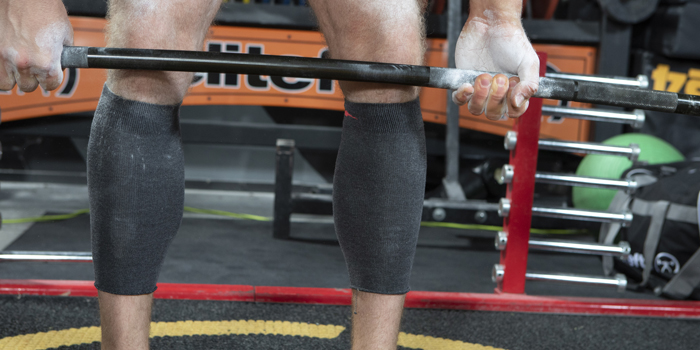
A common sentiment in the lifting world is that the deadlift is the hardest exercise to recover from. This is a notion that I’ve subscribed to for a long time. The deadlift is considered the hardest exercise to recover from because of its effect on the central nervous system. Christian Thibadeau believes the deadlift decimates the central nervous system more than other exercises due to a few reasons:
- High demand on grip strength, which can wreck the CNS;
- Greater strain on the spine, which is the primary area for neural messages between the brain and body, therefore causing a large stress response;
- Starting from a dead stop position negates the stretch reflex and requires more muscle recruitment;
- Heavier loads are generally used, and that creates more neurological demand;
- Tendency for grinding reps with less-than-stellar technique can decimate the nervous system (4).
These explanations seem totally within reason as to why the deadlift would create more fatigue and take a longer time to recover from. However, some research shows this might not be as cut and dry as it is made out to be.
Time Course of Recovery is Similar for the Back Squat, Bench Press, and Deadlift in Well-Trained Males
One study, in particular, stands out with regard to comparing the recovery times between the bench, squat, and deadlift. Belcher et al. took twelve resistance-trained males and had them perform four sets to failure with 80% of their one-repetition maximum (1RM) on the squat, bench, and deadlift in consecutive weeks. To analyze the recovery process amongst the participants, researchers measured muscle damage and performance fatigue pre- and post-exercise and at 24, 48, 72, and 96 hours.
NEW: 4 (Big) Training Mistakes You're Making
Markers that were evaluated included limb swelling, joint range of motion, delayed onset muscle soreness, average concentric velocity (ACV) at 70% of 1RM, creatine kinase, lactate dehydrogenase, and cell-free DNA (cfDNA). The results were somewhat surprising in that the ACV decreased in the squat up to 72 hours afterward and in the bench press immediately post-exercise. However, ACV did not decrease for the deadlift.
Additionally, cell-free DNA increased in the squat and bench press conditions over time, while the deadlift had no such effect. These findings caused the researchers to conclude that the deadlift did not cause more muscle damage and, therefore, more recovery time than the squat and bench press after volume-type training.
As an aside, muscle damage is hypothesized to be a catalyst or trigger for central nervous system fatigue. Group III and IV afferent neurons transmit impulses from sensory receptors in muscles to the brain and spinal cord. If the receptors detect too much stress (i.e., delayed onset muscle soreness) from mechanical loading or excessive metabolite accumulation, neural drive will be disrupted, and voluntary activation of the muscle will be diminished (2).
One of the drawbacks of the above study by Belcher et al. is that they had the participants perform higher volume on the deadlift (four sets to failure with 80% of their 1RM), so they did not take into account the variable of higher intensity and therefore, heavier loading which can affect the deadlift more than the squat and bench press.
Acute Neuromuscular and Endocrine Responses to Two Different Compound Exercises: Squat vs. Deadlift
A study by Barnes et al. compared post-workout strength recovery and peripheral and central nervous system fatigue between heavy back squats and heavy deadlifts. Ten strength-trained males were instructed to do eight sets of two reps at 95% of their 1RM on the squat and deadlift in separate workouts.
To assess central nervous system fatigue, maximum voluntary isometric contraction (MVIC) force of the quadriceps along with voluntary action and surface EMG were measured before and five and 30 minutes after training. The researchers discovered a significant decrease in maximum voluntary force of the quadriceps at the five-minute mark after each exercise. However, there was no difference between the squat and deadlift. Also, the quadriceps voluntary action decreased post-workout up to 30 minutes after each exercise. Once again, there was no observable difference between the squat and deadlift.
Of course, the results from this study don’t tell the whole story. Quadriceps are only one part of the equation with regard to executing the deadlift and back squat. Examination of central nervous fatigue relative to the hamstrings and low back musculature wasn’t measured, which might yield different results. These findings are still important, nonetheless, in regard to furthering the discussion and investigation of whether the deadlift is the most demanding exercise with regard to central fatigue.
The practical application from these studies is that the deadlift has the opportunity to be programmed differently than previously thought. In a typical powerlifting (or powerbuilding) setup, the deadlift is usually scheduled for the end of the week after the other lifts. This makes sense because the deadlift is the last exercise to be completed in a powerlifting meet. And anecdotally, it is thought to cause the most central nervous fatigue.
However, applying the above research findings can deduce that the back squat might be shortchanging the deadlift in terms of its efficacy. For example, if the back squat causes as much central nervous system fatigue in the quadriceps as the deadlift, this could be debilitating as to the usage of them (quadriceps) during the deadlift, particularly when pulling conventional.
As a result, it might be wise to adopt a Westside Barbell approach to training in that dynamic and maximum effort days could be alternated for the squat and deadlift on a weekly basis. I feel this is most optimal for training because it doesn’t sabotage one’s workouts with accentuated central fatigue and provides enough rest to display peak performance.
Further, if this method doesn’t suit the lifter, they could implement another Westside strategy by changing the exercise variation from one week to the next to optimize recovery. If they perform high bar squats (quadricep dominant) one day during the week, they could do a less-dominant quadricep exercise on their deadlift day, such as a rack pull or block pull. Then, the following week, it could be programmed differently. A low bar box squat (hamstring/low back dominant) could be done one day, and then a conventional deadlift or deficit deadlift (quadricep dominant) done on the other lower body day.
Overall, there are a number of options for sequencing your training sessions so that your central nervous system can stay fresh and last longer.
References
- Barnes et al. “Acute Neuromuscular and Endocrine Responses to Two Different Compound Exercises: Squat vs. Deadlift.” The Journal of Strength and Conditioning Research, vol. 33, issue 9, Sept. 2019, pp. 2381-2387.
- Beardsley, C. (2019). How does muscle damage lead to central nervous system fatigue? Retrieved from: https://medium.com/@SandCResearch/how-does-muscle-damage-lead-to-central-nervous-system-fatigue-93f36e1cbaa3
- Belcher et al. “Time course of recovery is similar for the back squat, bench press, and deadlift in well-trained males.” Applied Physiology, Nutrition, and Metabolism, vol. 44, no. 10, Oct. 2019, pp. 1033-1042.
- Thibadeau, Christian. (2018). Tip: The Deadlift & The Nervous System. Retrieved from: https://www.t-nation.com/training/tip-the-deadlift-the-nervous-system/
Jay Corwell is a certified personal trainer and powerlifter in Cincinnati, Ohio. He trains individuals from all walks of life for one reason: to get them strong. Jay has his Master's degree in Health Education with a concentration in Exercise Management from the University of Cincinnati. He operates his own website at fitnessslackers.com.










